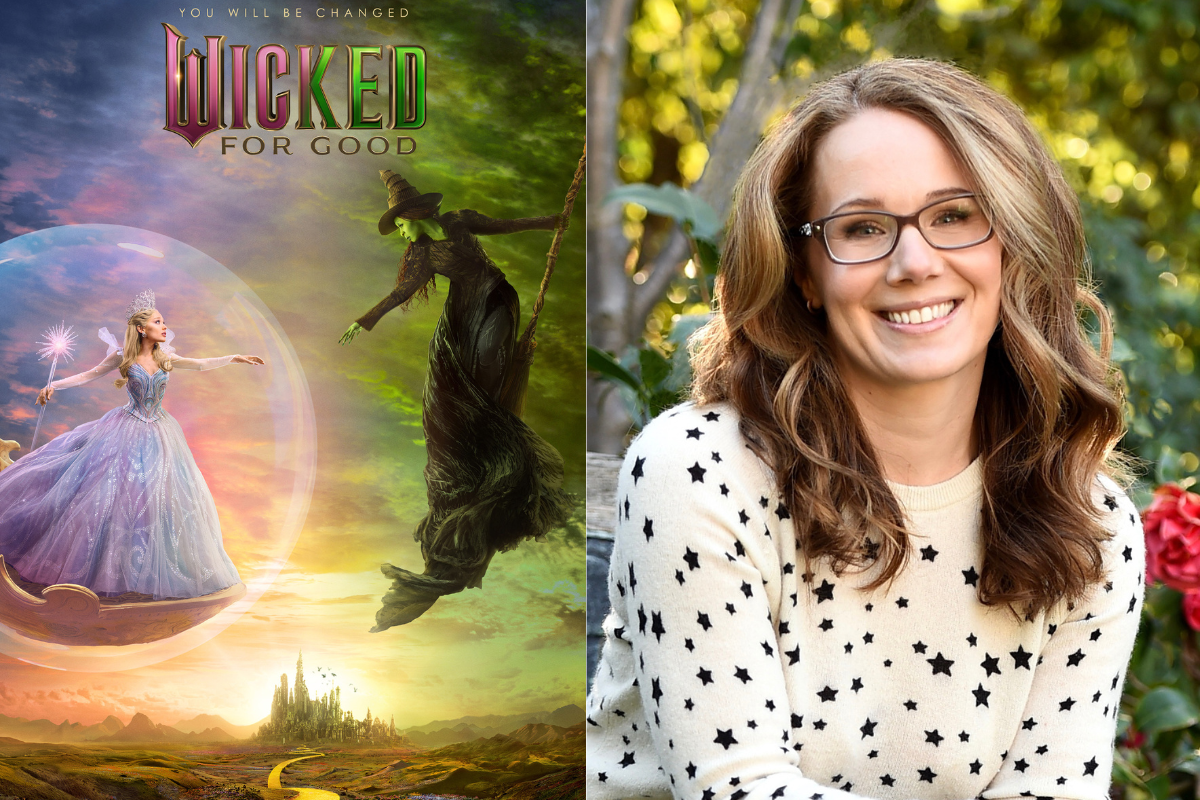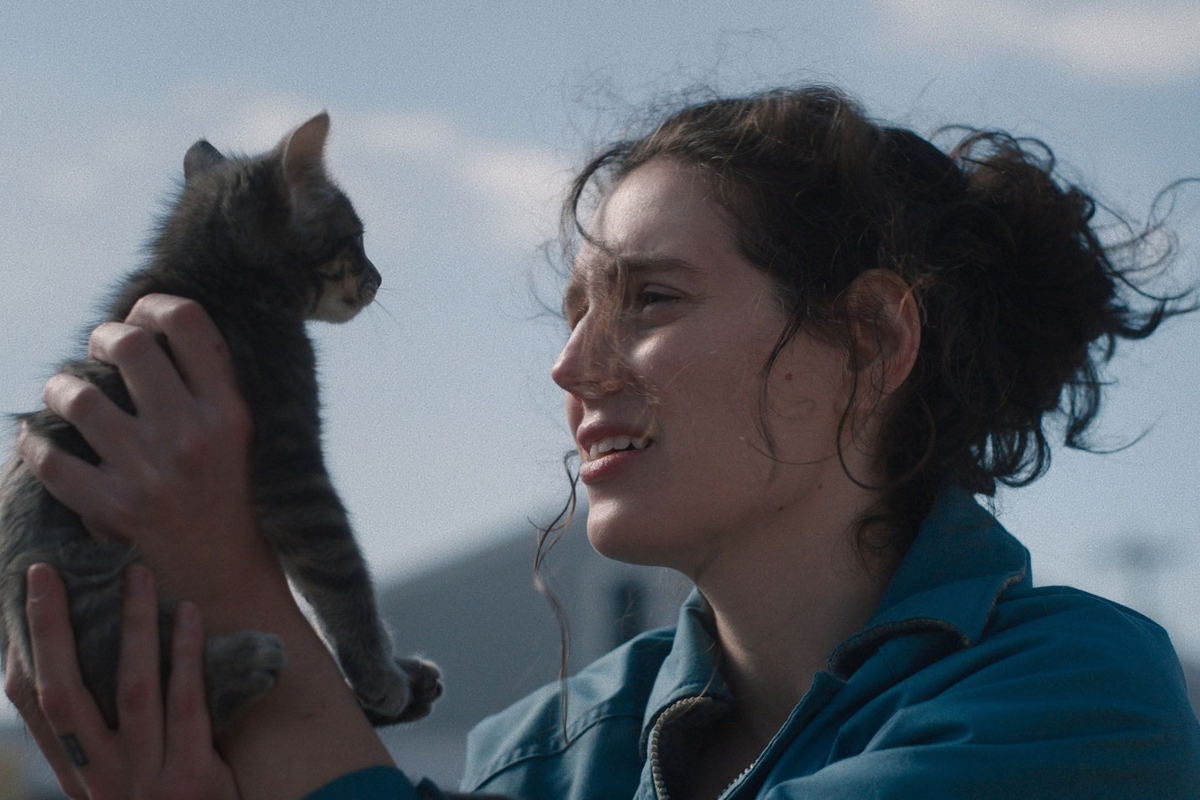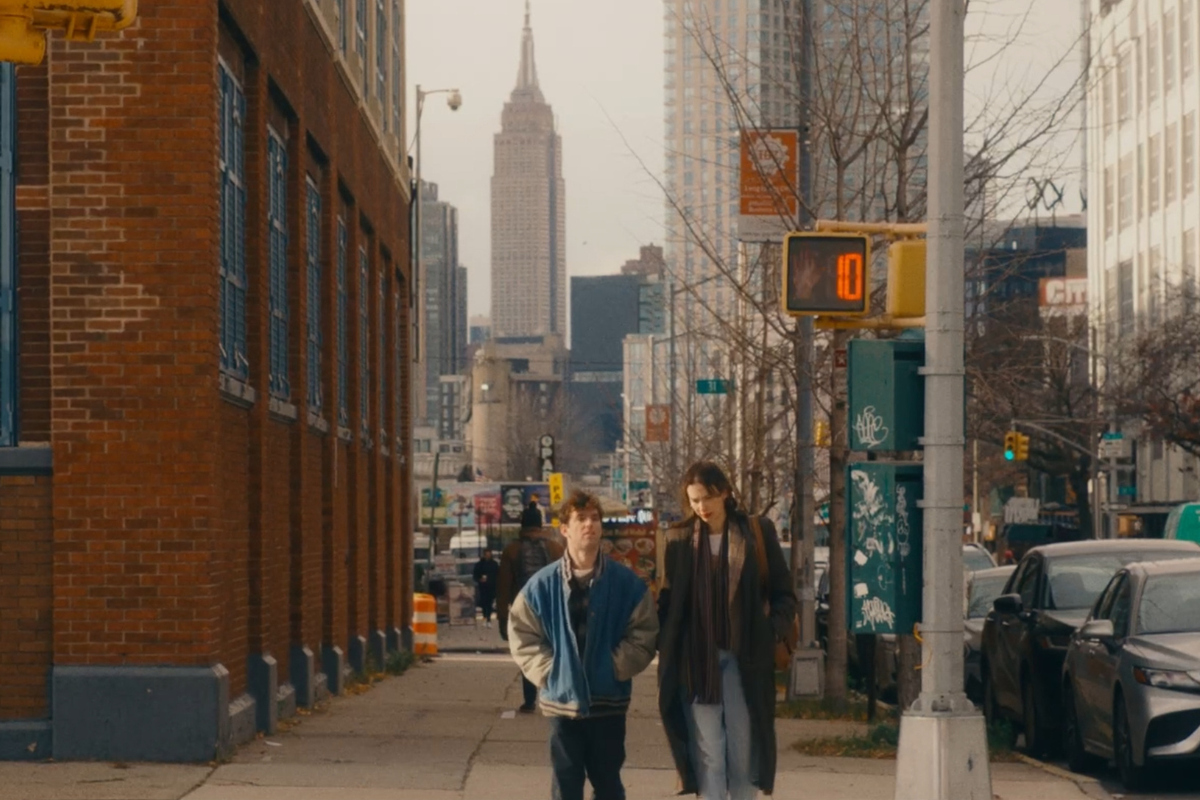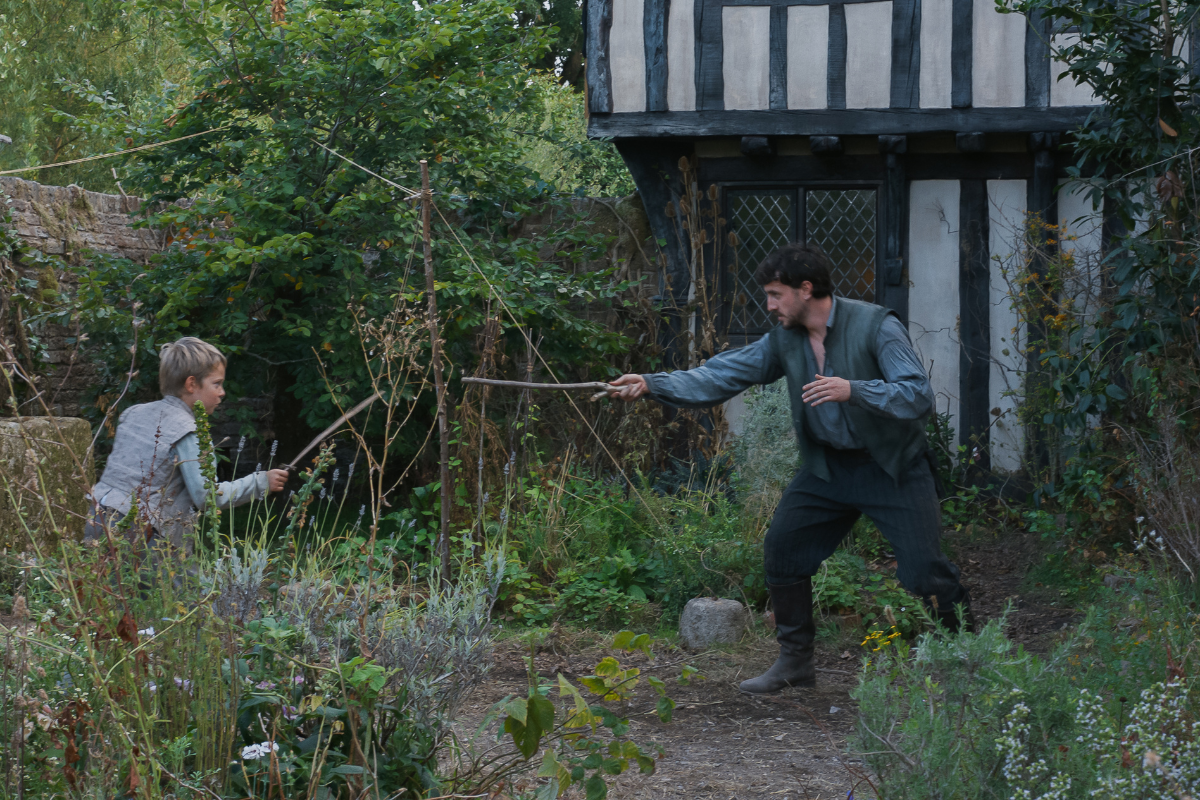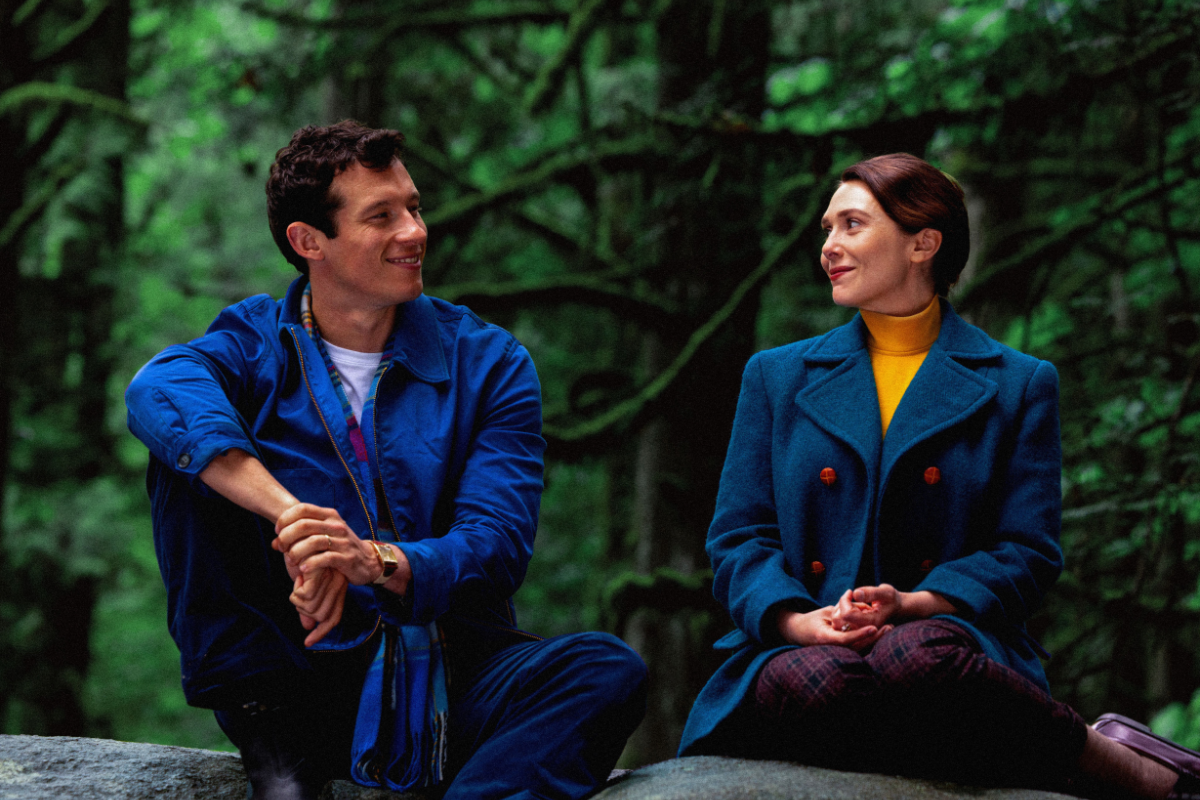How Screenwriters Julian Higgins and Shaye Ogbonna Created Nuance and Complexity in ‘God’s Country’
‘God’s Country’ director and co-writer Julian Higgins and co-writer Shaye Ogbonna share with Script their approach to telling this specific story, their collaboration, working with Thandiwe Newton and shaping her character and the creative collaboration with their cinematographer Andrew Wheeler.
Based on a short story by acclaimed author James Lee Burke, God’s Country is a character-driven thriller set in the snowy wilderness of the American West. Thandiwe Newton plays Sandra Guidry, a Black professor living and working in a rural college town. She’s also grieving her recently-deceased mother, for whom she'd served as primary caretaker. On the day of the burial, Sandra discovers a mysterious red truck parked in her driveway. She soon learns it belongs to a pair of local hunters seeking to enter the forest behind her house. Sandra turns them away politely but firmly – her experience tells her these are not the sort of men to welcome freely into her world. But they won’t take no for an answer, and soon Sandra finds herself drawn into an escalating battle of wills that puts her most deeply-held values to the test.
God’s Country, hailing from director Julian Higgins, co-written with Shaye Ogbonna, recently had its online premiere at the Sundance Film Festival. As mentioned in my Sundance day four recap, the festival lineup of films to date has put the female character front and center. And this film is no different, as it tackles the mindset of being a woman – the battles, the uneasiness, the scariness, the demand for respect and independence, in order to feel secure in your own, rightful, space. As you'll learn from my conversation with the writers, it's a modern-day Western, centered around a formidable woman - it speaks truth through an honest lens.
I had the utmost pleasure of speaking with director and co-writer Julian Higgins and co-writer Shaye Ogbonna about their approach to telling this specific story, with the obvious elephant in the room that they're two men writing a female character-driven story, their collaboration, working with Thandiwe Newton and shaping her character and the creative collaboration with their cinematographer Andrew Wheeler and how the camera was able to translate a feeling through specific framing.
This interview has been edited for content and clarity.
Sadie Dean: Julian, with your short film Winter Light, I'm curious, when you made the short, was it always the intention to make this into a feature?
Julian Higgins: No, in fact, it's basically the opposite. It was a somewhat expensive short. [laughs] And throughout the process, the producers were urging me like, ‘Is there some way we can make this into a feature?’ And James Lee Burke's Winter Light is about, I think it's 18 pages and it's an incredibly contained internal story - I think like two things happen. Most of it is what's going on inside this guy. And so, I was pretty adamant throughout the process, that there just wasn't enough material here to make a feature. It's not the classic like, ‘I made a short in order to make a feature.’ I actually thought when I finished Winter Light that that was the end. The short story and the short film are very similar. And this is, of course, a very radical new direction to take the material.
Basically, after finishing the short, a couple of years went by and the 2016 election came around. And Shaye and I were - I think like everyone, no matter who you are - incredibly galvanized by that election, and we were feeling like we needed to respond in our work, because otherwise, what are we doing? And Shaye and I had a very important conversation in December 2016, where we really kind of realized we were on the same page about that idea. And as Shaye would say, “Making our art our activism.” And then in January, I had the idea of that story. It really returned for me because of the themes seem more relevant than ever. And I had this idea that if we changed the nature of the main character, we would be able to talk about all these things that we were feeling very passionate about at the time. And that was a big responsibility. We had to do a lot of work to make that happen. But that was a goal that felt very worthwhile too, for both of us.
Sadie: Shaye, getting involved with the story, what initially attracted you to go all-in on this?
Shaye Ogbonna: Well, I mean, it's pretty self-serving in that I grew up with genre storytelling and I grew up watching big movies. And for me, it was very tough, because I never really saw myself in a lot of in these movies, specifically, the Westerns, which I'm a big fan of. So, the idea of centering a woman and a woman of color in this environment, it spoke to me from my own personal experiences of being a fish out of water, but also being able to honor women that have been influential in my life and show a woman as an outsider, in this circumstance, we don't get a chance to see that. And so, the idea of making a modern Western, with this particular character at the center of it, and to be able to challenge some notions that people would have about the choices that this character would make, that's what spoke to me, and that's what excited me about where this project could go.
Sadie: I think that you guys do such a great job in capturing the idea of being a woman and being totally out of place. And that fear that comes with wanting your independence and sticking up for yourself when you know that you're in the right and then you seemingly buckle down for political reasons, and it’s a terrible feeling. I love this character Sandra and her turn in the end. In terms of casting, Thandiwe Newton, amazing in this role, did she have a really big influence in developing her character Sandra?
Julian: Yeah, absolutely. I was going to say actually that I think we both love the idea, you know, if someone had pitched us the idea, we would love it. But as two men trying to do this, we had to be aware of this responsibility that we had to get it right, as right as we could possibly get it. And in the back of my mind was always this idea that just about every role, that when you cast a role, you're giving that character to the actor. You have to kind of let go of whoever you had in your head, not that there was an actor in our head, but just the person you imagine, as you're writing a fictional character, it becomes a real person. And so for me, the casting process was about trying to find someone who really understood the priorities and the concerns of this character. And Thandiwe is such a passionate, engaged, human being, like forget actress, it's so clear she's so outspoken about the things she cares about. And it's not some celebrity bullshit - these are things she genuinely cares about on a deep level. And so that was one thing. It just made so much sense, given all of her qualities as an actress, and as a human, I kind of had this feeling she was going to like it. And then when we talked, it was so obvious, by the end of the first conversation we had, it was just, she's definitely the person who needs to do this.
She was an absolute joy to work with and she was heavily involved. That's why I mentioned when you have an actor, at least for me, there has to be a conversation where it becomes, you're collaborating on the script in a way. Sometimes the lines stay the same and sometimes they don't. It's not really about the dialogue. It's about who that human being is. And Shaye and Thandiwe and I spent a lot of time going through things together. She had wonderful ideas that we of course incorporated, and even on set, we rewrote scenes on the day if it felt necessary. There was one significant scene, that when she arrived, and she was like, ‘I was thinking about it, I don't think I would do that one thing.’ And to me, that is a gift. That means you have an actor that cares and is opinionated and has a take on it. And so, you say yes to those things as a director.
Sadie: I'm familiar with Shaye's writing from our AFI days and your work as well, Julian, you both do this really great thing in letting your characters take a moment to breathe and observe and give them those beats to explore the world and plan their next move. And you also do that so well Julian, in your AFI thesis film Thief. Working with your cinematographer, Andrew Wheeler, what was that collaboration like, because the shots choices, framing, lighting is so very specific, especially that last scene?
Julian: Andrew Wheeler, we call him Wheels, he and I met at AFI in 2008. And we've basically been working together for the last 12 years. We have a sense of each other's sensibilities, and we do have a lot of conversations. It's very similar to the process with Shaye actually, we have a ton of conversations early on about what the movie is about and what we're trying to explore, not what we're trying to say, necessarily. Which is like, what are the things that actually matter in the storytelling. And then slowly over time, that trickles down into choices that make sense, because we want things to be integrated. Anytime we did anything, came up with an idea that would be cool, if it wasn't justified, it just doesn't work. And so the thing you're saying about the last shot that is deeply connected to what Shaye and I were talking about, in the story about these cycles, and the kind of inevitability of these outcomes. And the question, it's very alive in the movie of, how do we break these cycles? And so there had to be a sense of inevitability in the camera. It had to feel like the camera knew what was going to happen. We talked about the movie, knowing what was going to happen in a lot of different ways, and the score as well, the DeAndre (James Allen-Toole), the composer, and I talked about how the music knows what the ending is already. And there's that sense of this is all kind of determined in a way and she's struggling to change it the whole time. And so, there's a tragedy to the fact that there's that inevitability at the end.
Shaye: Yeah, their ability to translate an idea or feeling to a moment or a scene in a film is unmatched. I noticed that in their work in Thief, and I noticed that in Winter Light, and now I'm just happy to be a part of it. I'm telling you, Sadie, that is not an easy thing to do, especially with nuance and complexity. The way he described that final shot, that's literally the way we conceived it; we can see that feeling, that's the way we wanted it to feel. And for them to be able to execute that and literally to stick that landing. It's beautiful to watch.
Julian: And that's what I meant by integrated, because the cinematography starts with us having that idea. When we came up with that ending the shot came with it. I saw the shot as we were talking about it. I just knew that's what it was. And we wrote it with that in mind. You understand why you're having those instincts, and then you apply it to other scenes.
Learn more about the craft and business of screenwriting from our Script University courses!
Sadie Dean is the Editor of Script Magazine and writes the screenwriting column, Take Two, for Writer’s Digest print magazine. She is also the co-host of the Reckless Creatives podcast. Sadie is a writer and filmmaker based in Los Angeles, and received her Master of Fine Arts in Screenwriting from The American Film Institute. She has been serving the screenwriting community for nearly a decade by providing resources, contests, consulting, events, and education for writers across the globe. Sadie is an accomplished writer herself, in which she has been optioned, written on spec, and has had her work produced. Additionally, she was a 2nd rounder in the Sundance Screenwriting Lab and has been nominated for The Humanitas Prize for a TV spec with her writing partner. Sadie has also served as a Script Supervisor on projects for WB, TBS and AwesomenessTV, as well as many independent productions. She has also produced music videos, short films and a feature documentary. Sadie is also a proud member of Women in Film.
Follow Sadie and her musings on Twitter @SadieKDean


